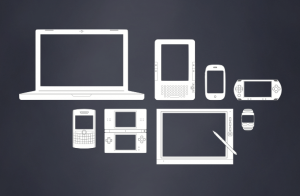RESEARCH: Connected devices commonplace
May 17, 2012
 Futuresource has released a study, conducted in the spring of 2012 in the USA, UK, France and Germany that surveyed more than 4,000 consumers on their usage of and attitudes to connected TVs, smartphones, tablets and eBooks/eReaders.
Futuresource has released a study, conducted in the spring of 2012 in the USA, UK, France and Germany that surveyed more than 4,000 consumers on their usage of and attitudes to connected TVs, smartphones, tablets and eBooks/eReaders.
Key findings from the study included the fact that three-quarters of connected TV owners are using their TV to connect to the Internet, with connection rates highest in France – at 71 per cent – and lowest in the UK, at 56 per cent. However, with increasing numbers of wifi-enabled models emerging into the market, these figures are set to rise.
Putting the research in context, Internet connectivity has expanded rapidly in recent years, with a wide range of mass market home and mobile devices now offering access. This trend has radically changed the way that consumers live their lives, carrying out interactions and functions on the move that were previously confined to the home or office. Watching TV and movies and playing games on the move have all become commonplace, while online shopping, web surfing and social networking have become significantly more popular as the range and ownership of connected devices has expanded.
The survey shows that the most popular uses for connected TVs are watching catch-up TV and YouTube videos and streaming films via online channels including Lovefilm and Netflix. Though at 40 per cent, 24 per cent and 23 per cent respectively, social networking sites, streaming music and personal media libraries are found to be used frequently.
62 per cent of respondents said they interact with additional electronic devices while watching TV. Laptops and mobile phones are the devices most commonly used, and although 25 per cent of respondents are surfing online to find out more about the programme they’re watching, the majority are doing completely unrelated activities.
Looking at respondents with children, the study found that laptops are the devices most commonly used by children. 44 per cent use a smartphone with over half using them to listen to music. 20 per cent use a tablet to surf the web and listen to music. 33 per cent watch video content on connected devices, and as a direct result are purchasing less DVDs and Blu-rays and 20 per cent are watching less regular TV.
The study also identified availability and choice of content as key differentiators in brand selection when purchasing devices. As a result, companies that have realised the importance of content to help develop brand loyalty have been the clear winners. Organisations such as Apple, Samsung, Amazon and the like have developed comprehensive content ecosystems, which have been fundamental in helping to lock in consumers and grow market share.
